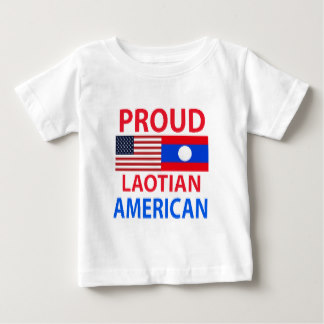In early September 2016, President Barack Obama will be the first U.S. President to visit Laos. The President is expected to offer a few aid packages, including funds to clear unexploded ordnance (UXO) in Laos. His visit to Laos will permanently close a final chapter of the US-led Secret War in Laos during the 1960’s and 1970’s and help open a new chapter in US-Laos bilateral relations in years to come. It also gives new hope and more opportunity to the more than 300,000 Hmong and 269,000 Laotian Americans to reconnect with their former homeland.
In the U.S., California is home to the largest Hmong American population (97,385) followed by Minnesota with (67,000) and Wisconsin with (45,000). The Twin-Cities of St. Paul/Minneapolis has the largest metropolitan Hmong population, followed by Fresno and Sacramento, California. Although the Hmong and Laotian Americans are diverse in their political view, many of them have helped Laos to gain Normal Trade Relations (NTR) and it is likely that the majority will support this historic visit to Laos by President Obama.
The U.S. and Laos have an unbroken diplomatic relations since 1955. Since the communist took over of Laos in 1975, the diplomatic relationship between the two countries was downgraded to Charge d’Affaires level, and remains intact until 1992 when full diplomatic relation was fully restored at the ambassador level again. Subsequent to the full diplomatic relation restoration, the U.S. granted its NTR to Laos in December 2004, furthering the relations between the two countries. In spite of the progress on diplomatic fronts, human right issues and legacies of war continue to dominate ongoing US-Laos engagements. Although Laos is badly tainted by the image of widespread corruption, and lack of transparency and accountability, its new government appears to recognize corruption as a serious problem that must be dealt with.
Since granting NTR to Laos, the country’s GDP has continuously grown about 7 percent during the past decade. The people there enjoy a much better life than the 1980s and 1990s. The government of Laos has initiated many incentive efforts for Hmong and Laotian Americans to visit Laos by waiver or reduce visa fee for those who are over the age of 60. The Lao National Assembly even passed law that allows its former citizens to return to Laos and apply for permanent residence. These encouraging developments will help bring more tourism to Laos which is critical to boosting the Lao tourism industry and its economy.
More encouraging developments on US-Laos relations emerge from the newly appointed government of Laos which pivot more towards the US and the West. Recent news commentary from the Nikkei Asian Review indicated that Laos is pivoted away from China. Unlike Cambodia when it hosted the last East Asia Summit, Laos has issued a joint communiqué, calling for all parties involving in the South China Sea to “pursue peaceful resolution of disputes … in accordance with international law, including the 1982 United Nations Convention on the Law of the Sea (UNCLOS).” This is a bold step for the tiny Laos to appease China and its foes over the July ruling handed down by the International Court of Tribunal in favor of Philippines and other ASEAN countries against China over the South China Sea Spratly Island dispute where China has militarized the island.
In looking forward beyond the upcoming ASEAN Summit in Vientiane, the landlocked and impoverish Laos needs to develop itself responsibly, sustainably, and environmentally sounded. The country needs to develop itself with innovation, high-tech and scientific know-how. Toward this end, Laos needs the U.S. and the Hmong and Laotian Americans to help bring in tourism dollars and small business investment projects. After all, the Hmong and Lao expatriates bring in millions of dollars annually to the Lao economy through remittance, and tourism. Moreover, many young Hmong and Laotian Americans who have been educated in the US and in the West might be in the position to assist in the development of Laos in the technical know-how if desirable by the Lao government to help entice them back home. More and more highly educated young Hmong and Laotian Americans have entered various professions, including NASA, Intel, Facebook, and other science and high-tech industries. There are many Hmong Americans, who hold tenured, and tenure-track University teaching appointments; some of them doing research and teaching in science and high-tech fields. In K-12 and higher education, hundreds of Hmong and Lao Americans serve as teachers, school principal and assistant superintendents in the American educational system. It will be a gain for all parties, if Laos can tap into the skills, expertise and resources of the Hmong and Laotian Americans.
Kou Yang is Professor Emeritus of California State University, Stanislaus. He is the author of Laos and Its Expatriates in the United States (2013), and Co-Editor of Diversity in Diaspora: The Hmong in the 21st Century (2013).
Source: Asian American Press



